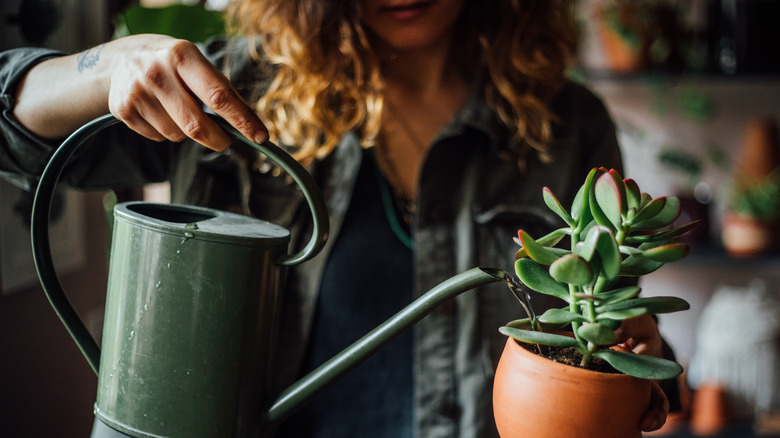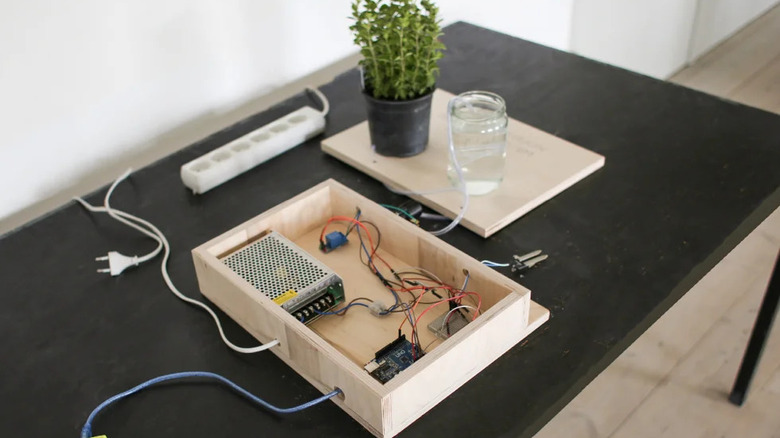This Arduino Project Will Change How You Water Your Plants
Whether you're a new plant parent or have been tending to an expansive collection for years, chances are you struggle to keep up with a regular watering schedule. Oftentimes, it isn't as straightforward as people hope. You either forget to water your plants on days when you have your hands full with other tasks, or you miss watering some plants just because you have an overwhelming number of them to care for. Failing to water your plants might be okay the first time around, but if it happens more often than you'd like, you'll soon find yourself among withered leaves and a less-than-inviting home or garden.
To address this, Instructables user benrbill came up with a game-changing solution: an automatic drip irrigation system powered by Arduino. This DIY electronic project not only makes sure your leafy companions get the hydration they need but also frees plant owners of the burden of having to remember to water their plants.
Behold the Arduino Plant Watering System
The Arduino Plant Watering System is designed to automatically supply water to your plant's soil once its moisture level falls below a particular point. The system relies on two key components to make this happen: the Arduino and the soil moisture sensor. The Arduino board functions as the controller, responsible for processing data and triggering actions based on that data. The soil moisture sensor, on the other hand, is just as its name suggests — it monitors the soil's moisture content. It's inserted directly into the plant's soil and reads the level every minute. When the sensor detects that the moisture content is already below 30%, it sends a signal to the Arduino, which, in turn, activates a water pump to provide hydration to the plant. As soon as the moisture level reaches upwards of 70%, the Arduino stops the water pump. This controlled water flow ensures the plant never gets too much or too little.
However, since different plants require different amounts of water, you're free to modify the Arduino code's thresholds to suit your specific plant. The code is less than 20 lines long and uses beginner-friendly functions, ideal for those who are just starting out. If you decide to make this project, you'll need the following materials:
- Arduino Uno
- Soil moisture sensor
- Breadboard
- 12V water pump
- 12V power supply
- Wiring cables
- Chocolate block connector for the power supply
- Tubing
You can check out the full step-by-step instructions on Instructables.

